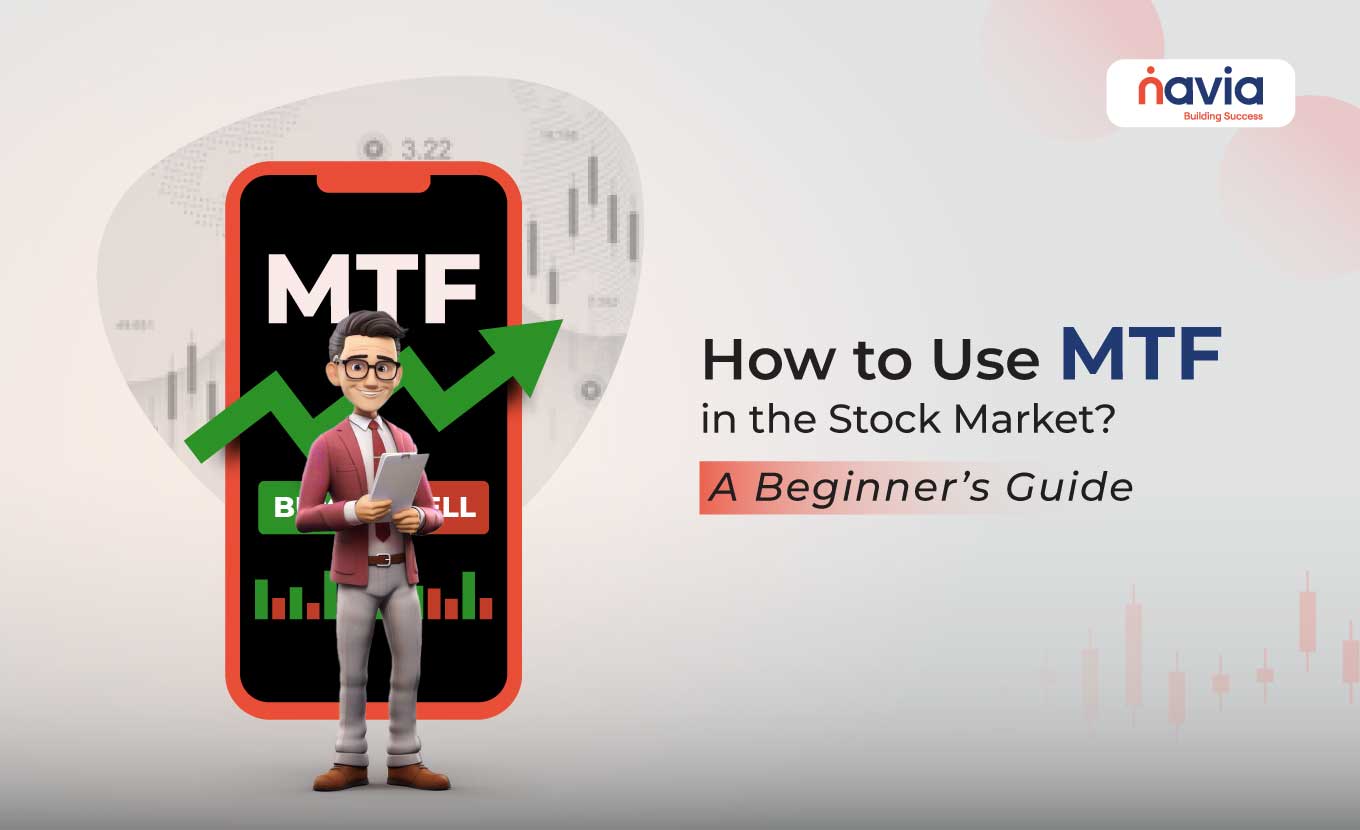How to Use MTF in the Stock Market: A Beginner’s Guide

We know the navigation of the stock market is challenging, especially for new investors. Just look at the MTF in trading, which stands for Margin Trading Facility in stock market. It opens a way to amplify your buying power, but most beginners don’t know about it.
If you are wondering what MTF is or MTF meaning in stock market, this guide is for you to break it down in clear terms. Also, we are showing you how MTF works, its benefits and important precautions you should consider before taking a decision.
What is MTF?
MTF or Margin Trading Facility is like a service that is offered by brokers, allows their investors to buy stocks by paying only a portion of the total cost. The remaining money is funded by the broker, so it’s the best option for investors to sort out the hindrances of the journey. Which means you can easily hold your positions longer than intraday trades, sometimes for days or weeks.
In the stock market world, MTF allows investors to leverage their existing capital and facilitate larger trades. So, brokers carefully select eligible stocks then define margin requirements and interest rates to ensure a structured and regulated framework.
Benefits of MTF
| Benefits | Description |
|---|---|
| Leverage | It provides greater trading exposure with your limited capital |
| Flexibility | You can hold positions beyond intraday, and make short-term to medium-term strategies |
| Quick Access to Funds | MTF provides immediate funding compared to traditional loans |
| Higher Potential Returns | Small market movements will offer substantial gains |
| Portfolio Diversification | The additional funds borrowing from broker so the investors can diversify their portfolio across different sectors |
Key Components of MTF Trading
Now we have to understand the components of MTF trading, that are essential for an effective workflow. Here you can the major components of it;
Eligible Stocks
Understand that all stocks can’t be traded using MTF in the stock market, all the brokers maintain a list that includes the stocks approved by SEBI guidelines, market volatility and liquidity.
Initial Margin Requirement
It is the percentage of the trade value the trader should deposit. The rest is provided by the broker, and you can pay through cash or approved securities.
Haircut Percentage
In MTF a haircut is a risk control measure, where the broker reduces the value of pledged shares to cover potential losses.
Interest Rate
Since the broker is lending funds for your trade, an interest rate is charged daily until the position is closed.
Duration of Holding
Unlike intraday trading, MTF allows you to hold positions for a longer period, but brokers may have specific time limits based on their policies.

How is MTF Process?
In the below image you can see the step-by-step procedure of MTF, that will help you to know the process in detail.
Step 1: Select a Reliable Broker
Select a SEBI-regulated brokerage like Navia Markets, then open a demat and trading account, ensure that they are providing MTF option.
Step 2: Understand the Margin Requirements
Check the eligible stocks and margin percentage before executing trades, it will vary to each stock.
Step 3: Placing Your Trade
In the buying process, select MTF as the product type, then pay the margin upfront, the broker funds the rest at an interest rate.
Step 4: Pay Interest Daily
Borrowed funds accrue interest until the position is closed or converted.
Step 5: Monitor Interest and Margins
Track daily interest and margin requirements to avoid margin shortfall.
Step 6: Repayment & Closing
You can close positions anytime. The broker retains your pledged shares until full repayment.
What Every New Investor Should Learn About MTF?
🠖 You’re borrowing money from the broker, so you’ll pay interest on the borrowed amount until you clear the dues.
🠖 Not all stocks are fully funded. Brokers apply a “haircut,” meaning only a percentage of the stock’s value counts toward your margin.
🠖 Leverage can amplify gains; it can also magnify losses if the market moves against you.
🠖 You must maintain the required margin at all times to avoid a margin call or forced selling of your holdings.
🠖 MTF is generally used for short- to medium-term trades, not for long-term investments.
Conclusion
MTF (Margin Trading Facility), is a valuable tool to amplify your trading power by enabling you to bet more than your cash allows. Without a clear understanding, structured plans and disciplined risk control you can’t be able to reach success. Before making a decision ensure that you are aware of all the factors of it, then spread your wings like a phoenix to live in the heights.
MTF can enhance buying power, but it should be used with caution and a clear understanding of risks.
Do You Find This Interesting?
Frequently Asked Questions (FAQs)
Is MTF good for trading?
MTF can increase buying capacity, but it involves leverage risk and may not suit all investors.
How many days can I hold MTF shares?
You can generally hold MTF shares for as long as you maintain the required margin and pay the interest. But some brokers set specific duration, so before taking a decision you must check everything.
Can I convert Intraday to MTF?
Yes, most brokers allow converting an intraday position to MTF before the market closes, so you can also try it, keep in mind that these are subject to margin availability and stock eligibility.
Is MTF trading risky?
Yes, because it uses leverage. While it can amplify profits, it can also magnify losses, and failure to maintain the margin can lead to forced selling of your shares.
Is MTF taxable?
Yes, profits from MTF trading are taxable just like regular trades. Taxes depend on whether your holding period qualifies as short-term or long-term.
Which is the best trading technique?
There’s no single “best” technique — it depends on your risk appetite and market knowledge.
DISCLAIMER: Investments in securities market are subject to market risks, read all the related documents carefully before investing. The securities quoted are exemplary and are not recommendatory. Full disclaimer: https://bit.ly/naviadisclaimer.






